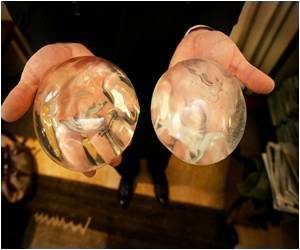Lights, Camera, Operation! The troubled expression that brews up in people on knowing that D. Nedunchezhiyan works as a photographer, of all places, in a hospital, is priceless, says this 52-year-old microphotographer, also a renowned artist, as he reveals to Medindia, the role of a photographer in recording a surgical procedure, and also how a good sense of art can help doctors get a better lead in the field of plastic surgery.
Q. What are the various responsibilities of an artist cum microphotographer in a hospital?The main responsibility would be the documentation of the various stages of the treatment/surgical procedure right from when a patient is admitted, to the surgical procedures (if any involved), and the result of the surgery. Other than this, I also have to work on illustrations for text books, design logos for functions organized by the department etc.
Q. Can you elaborate on how you videograph and photograph the ongoing surgeries?
A. The plastic surgery procedures are largely open surgeries, and hence we use a handicam to record them. Since some surgeries extend for long hours, it becomes exhausting to cover or record the whole surgery and so it becomes necessary that the person recording knows which part of the surgery has to be given more focus. The doctors will certainly guide them, but as one gains experience in the field, we gain the knowledge ourselves. It would be a little challenging in the beginning as one has to get used to the blood and other aspects of the environment, and at the same time not disturb the doctors while recording the surgery. But as said earlier, one gets used to it. Editing these recorded footages and compiling it into a short video, and presenting it in the manner that any ordinary person would understand, is the next stage of the work.
Q. How can art and graphics assume greater significance in medicine?
A. There is a huge scope to incorporate art in medicine, from various fronts. Generally, people who turn to plastic surgery are those who have met with some kind of accident or have a disfigurement or damage in some part of their body that needs to be set right. It is not always for cosmetic reasons, that people go under the knife to improve their looks.
Q. How has the nature of your work changed over the period of time?
Q. You are basically from the fine arts background. How do you represent the scientific concepts without any formal training in medicine?
A. In Fine Arts we had a paper on Human Anatomy, and so there is the basic idea of the human body. And then there is always the doctor to direct and guide us on what kind of a diagram or illustration he envisions. In many cases, the doctors take me along with them to the morgue, where they dissect the cadavers and mark with some colored paint, what is to be illustrated and what should be highlighted.
Q. What are you currently working on?
A. At present most of my time is utilized on the plastic surgery museum in my hospital that is coming up. The models on display, the info-graphics, the charts and the pictures, are all to be planned and made under my supervision.
With several such responsibilities prevalent in the medical sector, artists and health sector personnel can exist in a symbiotic relation that benefits both.
Source: Medindia








